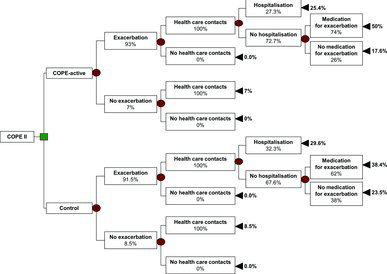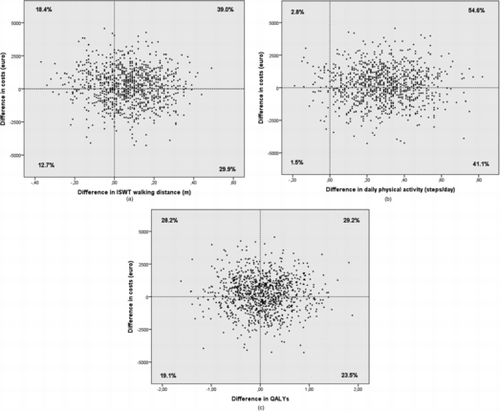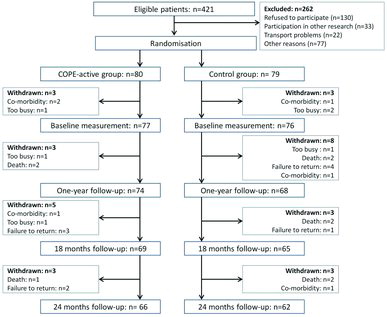Figures & data
Table 1. Baseline characteristics
Table 2. Net changes in health outcomes and incremental cost effectiveness ratios of a self-management programme with vs. without a community-based exercise programme after 2 years of follow-up, 1 year of follow-up, and in the case of continuing exercise in the second year (hypothetical)
Figure 2. Decision analytic model of a self-management programme including a community-based exercise programme (COPE-active) vs. self-management only (control).

Table 3. Mean costs (€) per patient over 2 years in patients participating in a self-management programme with and without community-based exercise
Figure 3. (a) Cost-effectiveness plane of the difference in costs against the difference in net deterioration of distance walked on the incremental shuttle walk test (ISWT, m). A positive difference in net deterioration in steps/day and a negative difference in costs are in favour of the COPE-active group. (b) Cost-effectiveness plane of the difference in costs against the difference in net improvement of physical activity (steps/day). A positive difference in net improvement of steps/day and a negative difference in costs are in favour of the COPE-active group. (c) Cost-effectiveness plane of the difference in costs against the difference in QALYs. A positive difference in QALYs and a negative difference in costs are in favour of the COPE-active group.


